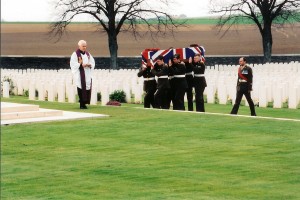I am pleased to announce that our new battlefield guide book, Fields of War: Battle of Normandy, will be available on April 1, 2014.
On 6 June 1944, 156,000 American, British, and Canadian servicemen fought ashore on beaches along the Normandy coast or landed from the air to begin wresting back Nazi occupied Europe. The D-Day invasion was the largest amphibious landing in history. Although successful, it was only precursor to months of the deadly fighting necessary to dislodge stubborn German defenders from the Norman countryside and eventually liberate France.
As a visitor’s guide, Fields of War: Battle of Normandy presents the actual locations of key events in the struggle to free France from German occupation. Each battlefield visit begins with a succinct history of events followed by a description of the intense military action that determined success or failure. The narrative revolves around the stories of the privates, NCOs, and junior officers whose sacrifices made success possible. Extensive detailed maps illustrate the flow of the battle across the landscape and the units that participated. Detailed driving instructions and GPS co-ordinates direct visitors to each battlefield site. Descriptions of museums, memorials, cemeteries, and surviving artifacts are given along with their hours of operation. Mailing, email, and web addresses are also provided.
The first nine chapters are each dedicated to the actions of one invading division on D-Day, June 6, 1944. The engagements of the British 3rd and 50th Infantry Divisions, British 6th Airborne Division, 3rd Canadian Infantry Division, the US 1st, 4th, and 29th Infantry Divisions, and 82nd and 101st Airborne Divisions are related through the actions of the men and units who made the invasion ultimately successful. The next five chapters relate the key engagements for the Norman cities of Caen, Cherbourg, and St-Lo, Operation Cobra, and the ultimate annihilation of the German Seventh Army in the Battle of Falaise Gap. A final chapter describes the Liberation of Paris by French partisans and elements of the 2nd French Armored Division.
Available from Amazon, Baker & Taylor, Barnes & Noble or directly from French Battlefields at http://www.frenchbattlefields.com
SOFT COVER, PERFECT BOUND
ISBN: 978-0-9823677-3-5
471 PAGES INCLUDING
32 PAGES OF B&W PHOTOGRAPHS AND 94 MAPS
6″ X 9″ (15.2cm X 22.8cm)
$29.95

